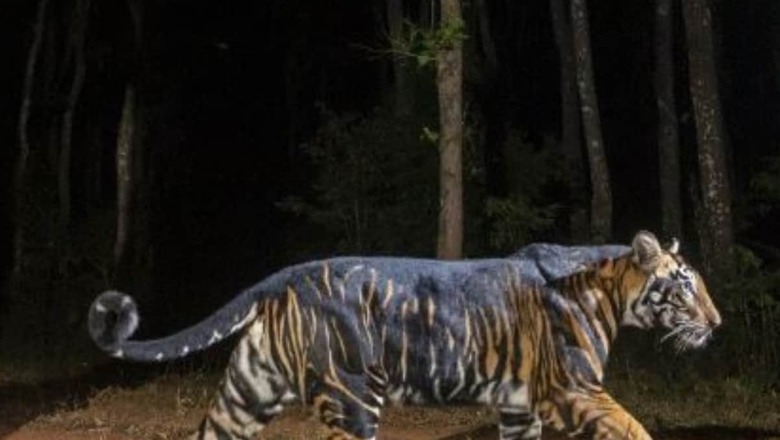
views
Nature is truly amazing and when you think you have seen it all, it comes back to surprise you with much more. Recently, Parveen Kaswan, an Indian Forest Service (IFS), took to microblogging platform ‘X’ to share images of “black tiger” captured in Odisha. Along with the incredible photos, Kaswan also informed the netizens that the reason for the tiger to have a unique coat was simply because the large cat was melanistic.
Melanistic refers to higher levels of dark pigmentation on the skin or hair, giving these tigers an unusual appearance. The officer further emphasised that these beautiful cats were extremely rare and the tiger was photographed in Odisha’s Similipal region.
Also Read: Man Narrowly Escapes Tiger Attack In Heart-Stopping Viral Video
The black tigers of #India. Do you know there are pseudo- melanistic tigers found in Simlipal. They are such due to genetic mutation & highly rare. Such beautiful creature. pic.twitter.com/X1TEw8r1cD— Parveen Kaswan, IFS (@ParveenKaswan) December 22, 2023
In a follow-up post, Kaswan informed that the first-ever sighting of a “black tiger” goes all the way back to 1993.
Also Read: It’s Not Everyday You Get To See A Tiger Family Roaming In The Wild
“On 21st July 1993 Salku, a young boy of Podagad village shot down a ‘black’ tigress with arrows in self-defense. The rare tigers were first officially discovered in STR in 2007. With time more were documented. They are due to rare genetic mutation and found in small population,” his post read.
Earlier this year, Ramesh Pandey, an Indian Forest Service officer and Inspector General of Forests in the Ministry of Environment, stunned the nature lovers with captivating footage of the melanistic tiger on ‘X’.
“Beautiful camera trap video of a melanistic tiger in Similipal Tiger Reserve, Odisha, the only place where we see blackish tigers because of genetic mutations in the population,” read the caption of the video.
Beautiful camera trap video of a melanistic tiger in Similipal Tiger Reserve, Odisha, the only place where we see blackish tigers because of genetic mutations in the population. pic.twitter.com/KXqvjX8tvs— Ramesh Pandey (@rameshpandeyifs) August 1, 2023
This rare tiger was captured on a camera trap, a device used to monitor wildlife populations and behaviour.




















Comments
0 comment